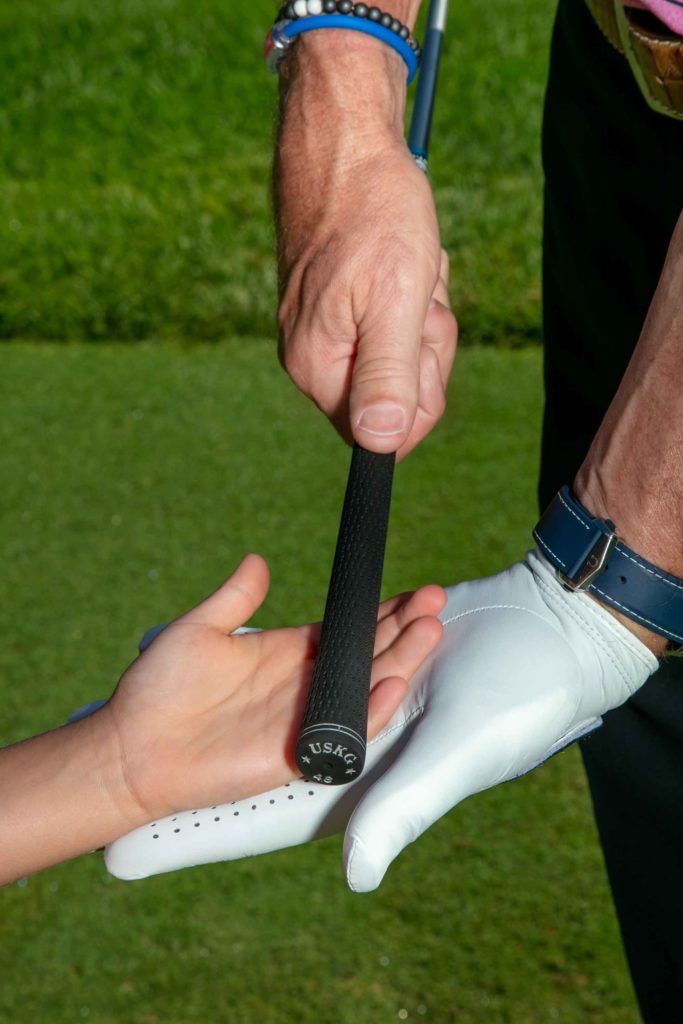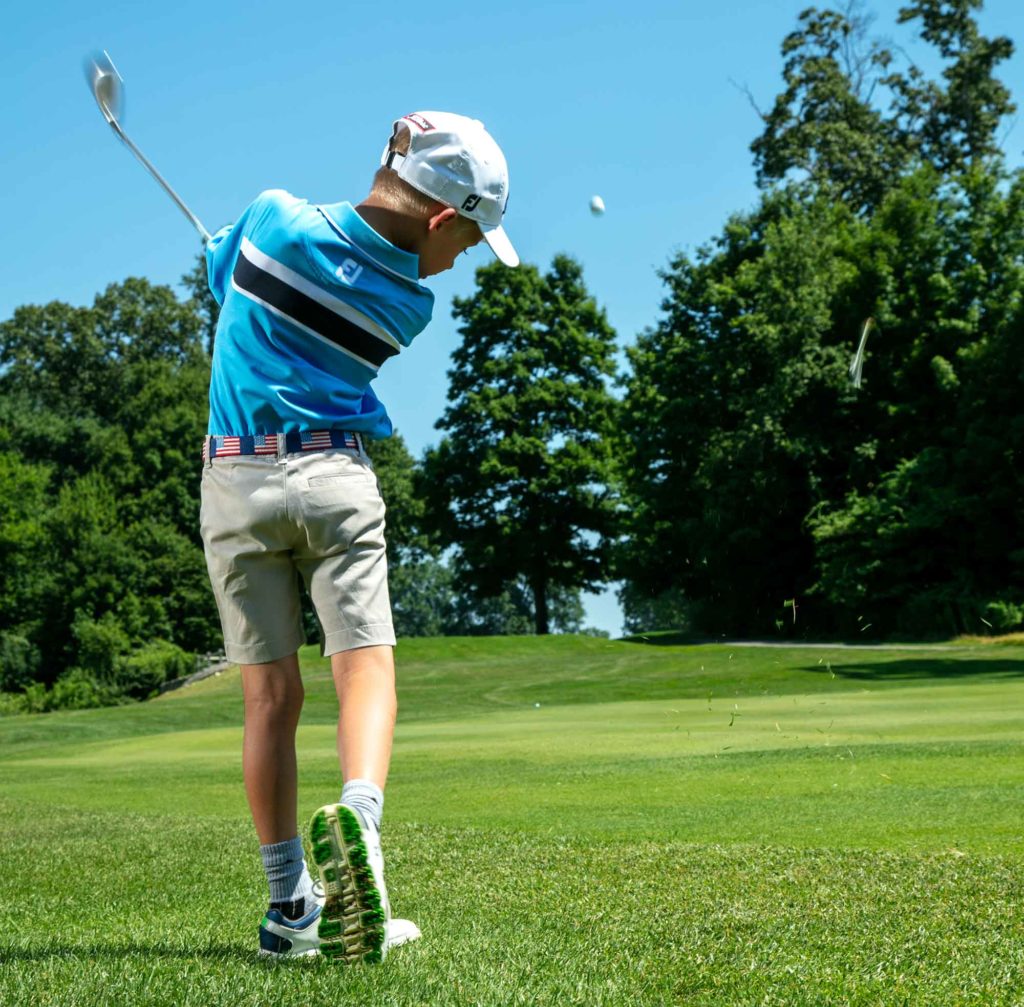Taking someone out for the first time? Here’s what you need to know.
A lot of people are trying golf for the first time these days – and that’s fantastic – but they’re doing it in a different way: bypassing the lesson tee and heading straight to the course. As a coach, I’d like to see a little training before anyone steps on the first tee. But as a guy who wants to share this game with more people, I’m all in on this quick-start trend. And if I can’t train them, let’s train you – the golfer who’s introducing someone to our game – to help the newbies pick things up faster. In this article, my wife, Kerri, and I are playing with our boys, William and Michael. I want to share the advice I gave them to speed up the learning process. My goals: offer a few pointers, stick to them, and heap on the encouragement. Here are two more tips to get you started: tell your students to hit every shot with a 9-iron, and tee it up everywhere. Let’s go! – with Peter Morrice

First fundamental
Get the grip right
The best grip advice is to hold the club in the fingers, not the palms. Like I’m doing here with William [above], place the grip in the lead hand (left hand for righties). Angle it across the base of the fingers, from the first knuckle of the forefinger to the bottom of the pinky, then close the hand around the grip. Add the other hand, also in the fingers – interlock, overlap, 10-finger, whatever feels good. The thumb pad of the trail hand should cover the thumb of the first. That makes it easy to hinge the wrists for power.

Second fundamental
Make sure they’re relaxed at address
Discussions about how to set up to the ball can quickly dissolve into a complicated mess. Instead, have them focus on three things: posture, balance and tension. Good posture establishes the correct distance from the ball, which is critical for beginners. I tell Michael to bend to the ball, add a little flex in his knees, and make sure his arms feel like they’re hanging straight down [below]. It’s really that simple. I remind him that his weight should be in the middle of his feet, not on his toes or heels. Last thing: tell them to relax! Michael looks great here, but he needs to stay loose.

Third fundamental
Have them turn with the club
Many new golfers mistakenly swing the club back with only their hands and arms – the body stays fairly still. It’s probably out of fear of missing the ball. Instead, what I’m showing William [left] is to feel as if the club is always in front of his body, just like it was at address. This gets the chest turning immediately, which increases rotation and keeps everything moving in sync. Of course, the club moves up and behind the body as the swing progresses, but this simple idea of turning with the club will get a beginner to start the swing correctly. It also triggers the weight shift to the back leg. I don’t tell William this – the less I say, the better – but when he loads correctly, he unloads correctly and rips it.

Save the tough shots for another time
Leaving shots in a bunker or hacking around in the rough can steal confidence and scare off new golfers. When one of our boys finds a tough spot, I just throw the ball back in the fairway. I let them know this isn’t cheating; we’re just having fun. Kerri and I want to make sure they have success and, more importantly, want to come back out.

Fourth fundamental
Tell them to pick up speed
My instruction for the through-swing is to have beginners imagine the club keeps gaining speed all the way to the finish. This prevents the common mistake of hitting at the ball, instead of swinging through it. I want all my golfers, especially anyone new to the game, to have a sense for the overall flow of the swing, instead of thinking about individual positions. Rhythm is so important to learn early on. When a golfer like William [right] can groove smooth acceleration throughout the swing, so many good things automatically fall into place. Plus, acceleration means distance, and nothing hooks a beginner on golf like watching that ball go.

Fifth fundamental
Have them clip the tee – every time
Hitting down on the ball to make it go high in the air is a tough concept for beginners. It’s totally counter-intuitive. One of the reasons my kids – and hopefully the beginners you’re helping – should use only a 9-iron to start is that the loft of that club takes away the urge to help the ball up. And with a tee under the ball for every swing, we’ve got a built-in training aid. I tell our boys all the time, “Hit the tee.” That simple directive promotes a downward strike – and every once in a while, that sensation of squeezing the ball off the ground. Long drives are nice, but is any feel in golf better than a pure iron shot? Michael loved it when he smoked this one [above].

Always celebrate the little wins
Beginners aren’t always sure what’s a good shot and what’s a bad shot. That’s where you come in. First, steer any reactions over bad shots towards the next opportunity. (The shorter the miss, the sooner the next opportunity.) As for good shots, anything airborne is a high-five – or an occasional hug if your kid grooves one. Even a hot ground ball should be praised. Point is, lay on the compliments.

